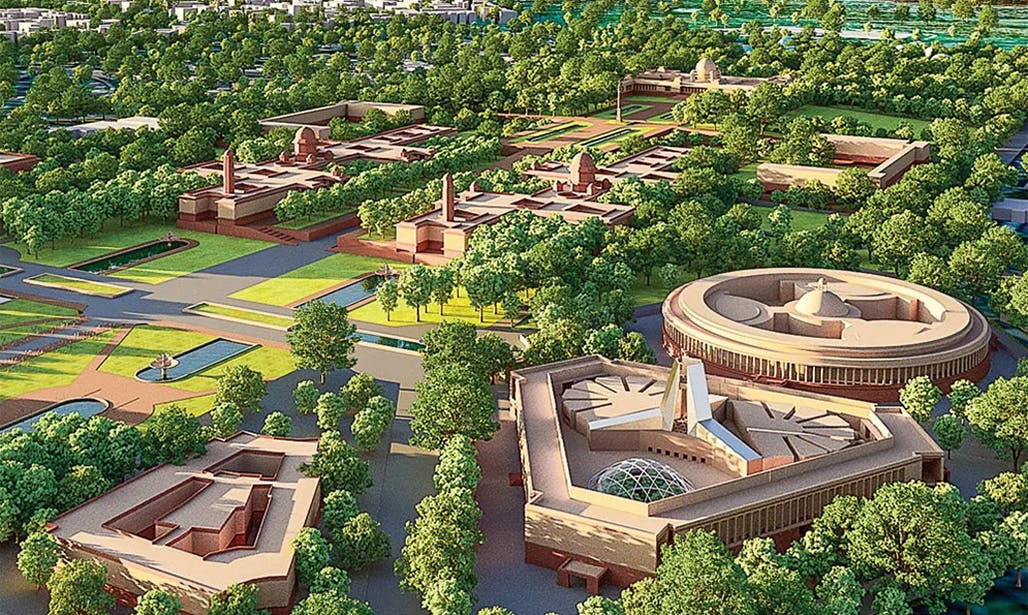
The Supreme Court of India has approved prime minister Narendra Modi’s controversial £3 billion plan to overhaul the historic buildings of the Central Vista in Delhi.
In 2020, the Supreme Court blocked the plan to revamp the three-kilometer stretch that runs from the India Gate war memorial to the prime minister’s residence, Rashtrapati Bhavan, due to concerns over environmental safety and land-use laws, but approved the designs on Tuesday with certain caveats.
Crucially for many critics, the central issue is the planned replacement of a group of buildings completed by architects Edwin Lutyens and Herbert Baker in 1927 at the height of British colonial rule.
The existing area features a circular design built around the Central Hall, which holds legislative chambers, with courtyards interspersed.
The proposal would reimagine the area with a triangular parliament building, including four-story offices and new residences for the prime minister and vice president that will overlook the current building, which will be converted into a museum.
The redesign is slated for completion by 2022 to coincide with the 75th anniversary of Indian independence.
Activist Bhavreen Kandhari told DW that the plans to remove the popular tourist site of a tree-lined vista would cut off public access to the area.
“The government is encroaching into public spaces,” Kandhari said.
A general view of the Indian Parliament building before the beginning of the first session of the Indian parliament in New Delhi on June 17, 2019. Photo by Money SHARMA / AFP via Getty Images.
But the government says the 93-year-old parliament building, which is not earthquake-ready, is not safe for continued use. Officials also want their chosen architectural firm, HCP Design, to build out additional space for government employees.
“From the day after independence, parliament was too small, because the existing building was the council house for the British Raj,” Bobby Desai, director of design at HCP, told the Guardian, using the term for British colonial rule. “It was certainly never designed to be a parliament building for a country of 1.4 billion people.”
But in an op-ed published by the Guardian in May, artist Anish Kapoor railed against lead architect Bimal Patel’s plan.
“Patel’s talent is not up to the task,” Kapoor wrote, citing his “destruction” of the cities of Ahmedabad and Varanasi, where green spaces and river banks were cemented as part of his previous architectural projects.
Kapoor described the plan as part of Modi’s “political fanaticism” for “cementing his legacy as the ruler-maker-builder of a new Hindu India.”
Kapoor did not immediately respond to Artnet News’s requests for comment.
The price tag of the project has been a sticking point for many critics, who say the money should be allocated to fight the ongoing coronavirus pandemic, which has killed more than 150,000 people in the country. The World Bank currently estimates that India’s GDP will plummet by 9.6 percent in 2021, an even sharper downturn than forecasted in June, due to significantly reduced service-sector opportunities related to the pandemic.
Another critic of the plan, Sohail Hashmi, a professor of international relations, says bringing all the government’s buildings into one place sends the wrong message.
“We should be talking about distributing power,” he told the Guardian. “Instead we have a design which will be the very embodiment of the concentration of power.”